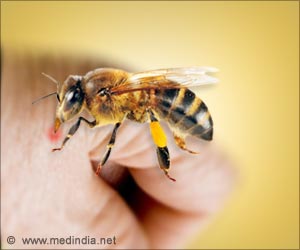A critical missing piece in the biodiversity discussion has been a lack of direct linkages to human health. This research establishes that the loss of pollinators is already impacting health on a scale with other global health risk factors, such as prostate cancer or substance use disorders.
World Without Bees: What Happens Next?
Increasing human pressure on natural systems is causing alarming losses in biodiversity, the topic of the COP 15 UN Biodiversity Conference currently taking place in Montreal. This includes a 1-2% annual decline in insect populations, leading some to warn of an impending ‘insect apocalypse’ in the coming decades.
Advertisement
Key among insect species are pollinators, which increase yields of three-fourths of crop varieties and are critical to growing healthy foods like fruits, vegetables, and nuts.
The researchers used a model framework, which included empirical evidence from a network of hundreds of experimental farms across Asia, Africa, Europe, and Latin America, that looked at ‘pollinator yield gaps’ for the most important pollinator-dependent crops, to show how much crop loss was due to insufficient pollination.
Pollinator Decline: Implications for Food Security & Environment
They then used a global risk-disease model to estimate the health impacts the changes in pollination could have on dietary risks and mortality by country. Additionally, they calculated the loss of economic value from lost pollination in three case study countries.
The results showed that lost food production was concentrated in lower-income countries but that the health burden was greater in middle- and higher-income countries, where rates of non-communicable diseases are higher.
The geographic distribution was somewhat unusual in that generally the health effects from global environmental change are centered among the poorest populations in regions such as South Asia and Sub-Saharan Africa. Here, middle-income countries with large populationsChina, India, Indonesia, and Russiasuffered the greatest burden.
The analysis also showed that lower-income countries lost significant agricultural income due to insufficient pollination and lower yields, potentially 10-30% of total agricultural value.
The results might seem surprising, but they reflect the complex dynamics of factors behind food systems and human populations around the world. Only with this type of interdisciplinary modeling, we can get a better fix on the magnitude and impact of the problem.
Strategies to protect wild pollinators are not just an environmental issue, but a health and economic one as well.
Source: Eurekalert



